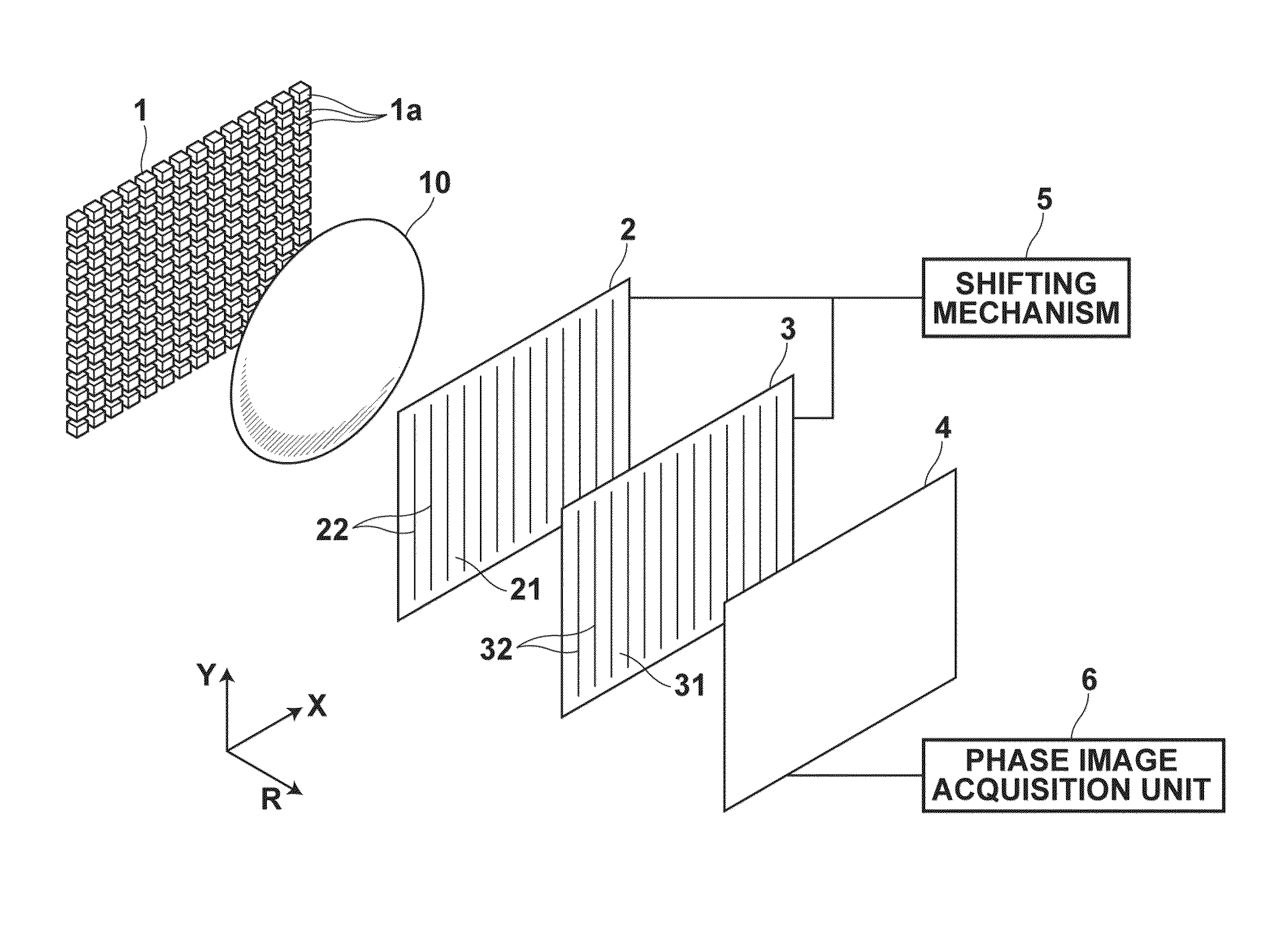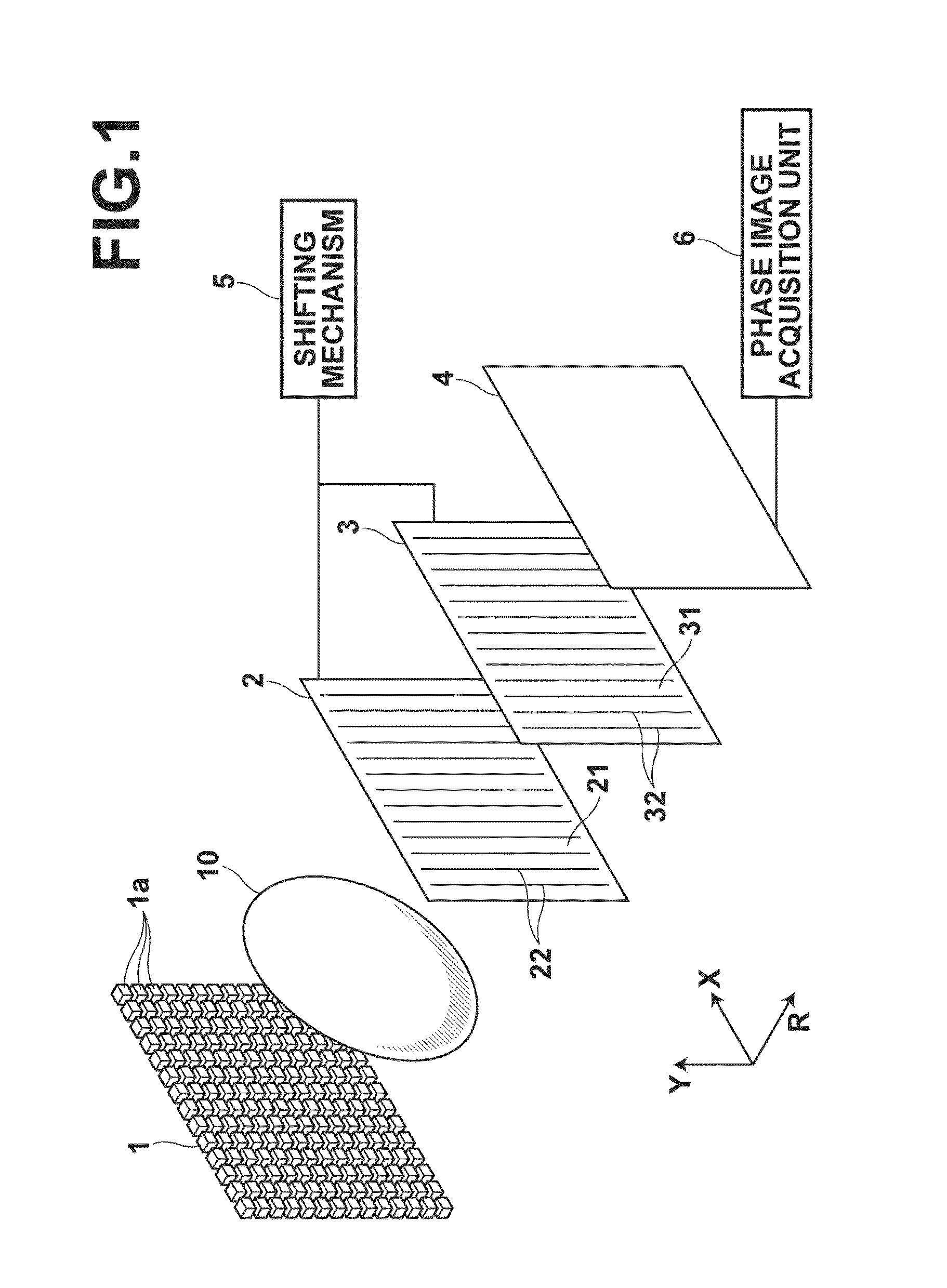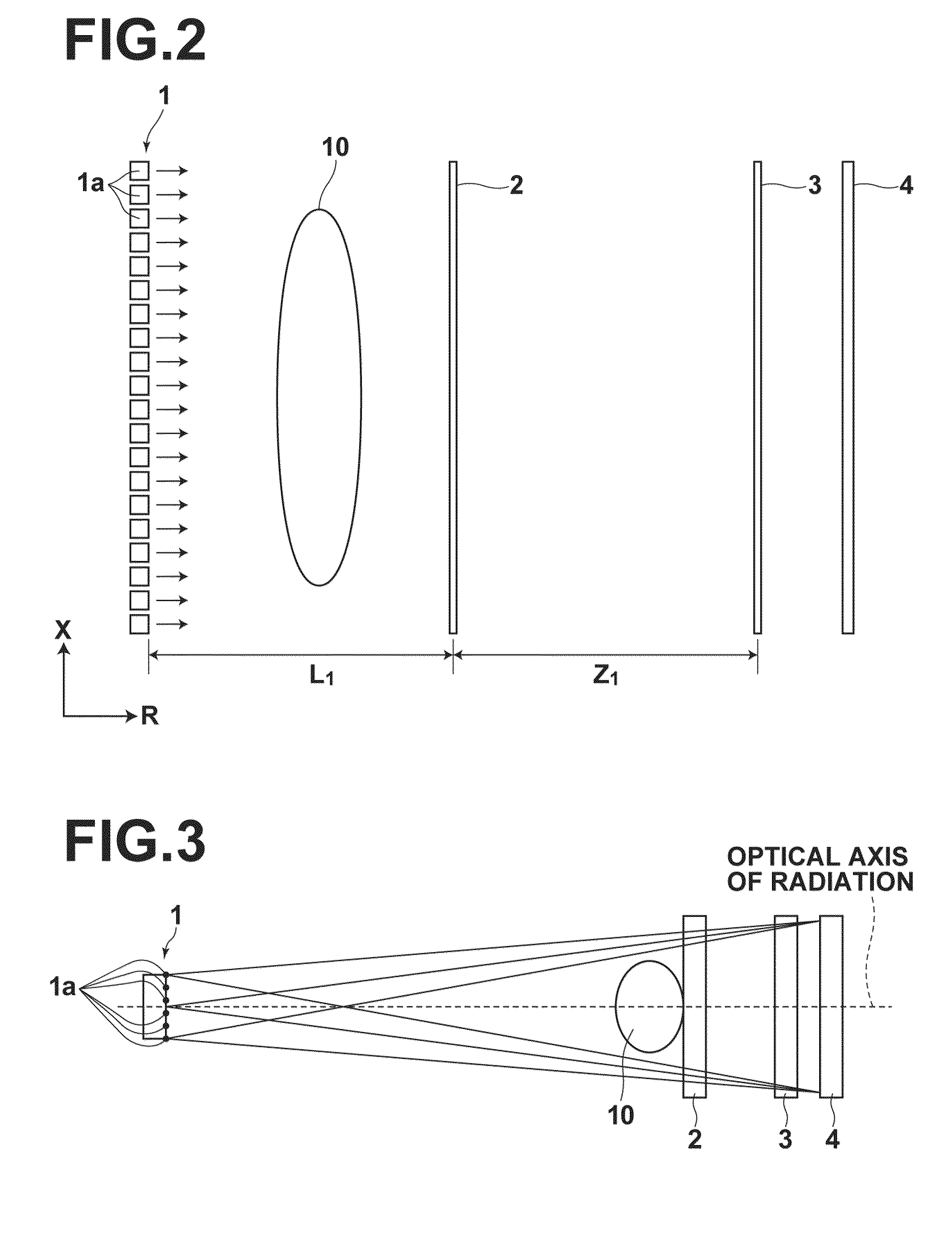Radiation phase contrast imaging apparatus
a technology of contrast imaging and phase image, which is applied in the direction of material analysis using wave/particle radiation, instruments, nuclear engineering, etc., can solve the problems of difficult manufacturing such multi-slit units and unfavorable phase images, and achieve the effect of reducing the cost of the apparatus
- Summary
- Abstract
- Description
- Claims
- Application Information
AI Technical Summary
Benefits of technology
Problems solved by technology
Method used
Image
Examples
first embodiment
[0107]Further, in the radiation phase contrast imaging apparatus an electron beam emitted from electron source 15a is controlled by electron beam emission control unit 16 by selectively switching the high voltage applied between extraction electrode 15c and target 15b, thereby controlling the focus interval of the radiation but, for example, the interval between each electron beam emitted from each electron source 15a may be controlled by controlling the electric field formed by electrostatic lens 15d and whereby focus interval of radiation may be controlled.
[0108]Still further, in radiation sources 1a of the first embodiment, emission of electron beam emitted from each electron source 15a onto each target 15b may be controlled by further providing gate electrode 15e between each electron source 15a and each target 15b as shown in FIG. 9, then applying a negative voltage to gate electrode 15e, and controlling the magnitude of the negative voltage. More specifically, the emission of...
second embodiment
[0113]As illustrated in FIG. 10, the radiation phase contrast imaging apparatus includes radiation emission unit 1 that emits radiation onto subject 10, grating 20 for receiving the radiation transmitted through subject 10 and diffracting the radiation, periodic information imaging radiation image detector 40 for detecting periodic information of the radiation diffracted by grating 20, shifting mechanism 55 for shifting grating 20 and periodic information imaging radiation image detector 40 in a direction orthogonal to linear electrodes of detector 40 (X direction in FIG. 10) along the respective planes, and phase image acquisition unit 6 for forming a phase image based on an image signal detected by periodic information imaging radiation image detector 40.
[0114]Radiation emission unit 1 has an identical structure to that of the first embodiment.
[0115]Grating 20 has an identical structure to that of the first grating in the radiation phase contrast imaging apparatus according to th...
third embodiment
[0174]As illustrated in FIGS. 26A to 26C, periodic information imaging radiation image detector 200 of the radiation phase contrast imaging apparatus includes the following stacked in the order listed below: first electrode layer 201 that transmits radiation; recording photoconductive layer 202 that generates charges by receiving radiation transmitted through first electrode layer 201; charge transport layer 204 that acts as an insulator against charges of one polarity of those generated in recording photoconductive layer 202 and as a conductor for charges of the other polarity; readout photoconductive layer 205 that generates charges by receiving readout light; and second electrode layer 206. Storage section 203 for storing charges generated in recording photoconductive layer 202 is formed adjacent to the interface between recording photoconductive layer 202 and charge transport layer 204. Each of the layers described above is stacked on glass substrate 207 one after another from ...
PUM
 Login to View More
Login to View More Abstract
Description
Claims
Application Information
 Login to View More
Login to View More - R&D
- Intellectual Property
- Life Sciences
- Materials
- Tech Scout
- Unparalleled Data Quality
- Higher Quality Content
- 60% Fewer Hallucinations
Browse by: Latest US Patents, China's latest patents, Technical Efficacy Thesaurus, Application Domain, Technology Topic, Popular Technical Reports.
© 2025 PatSnap. All rights reserved.Legal|Privacy policy|Modern Slavery Act Transparency Statement|Sitemap|About US| Contact US: help@patsnap.com



